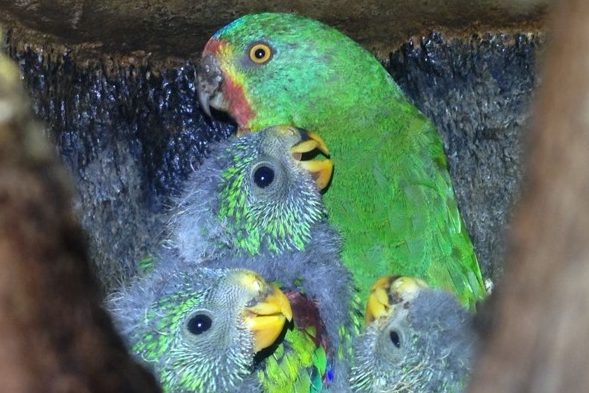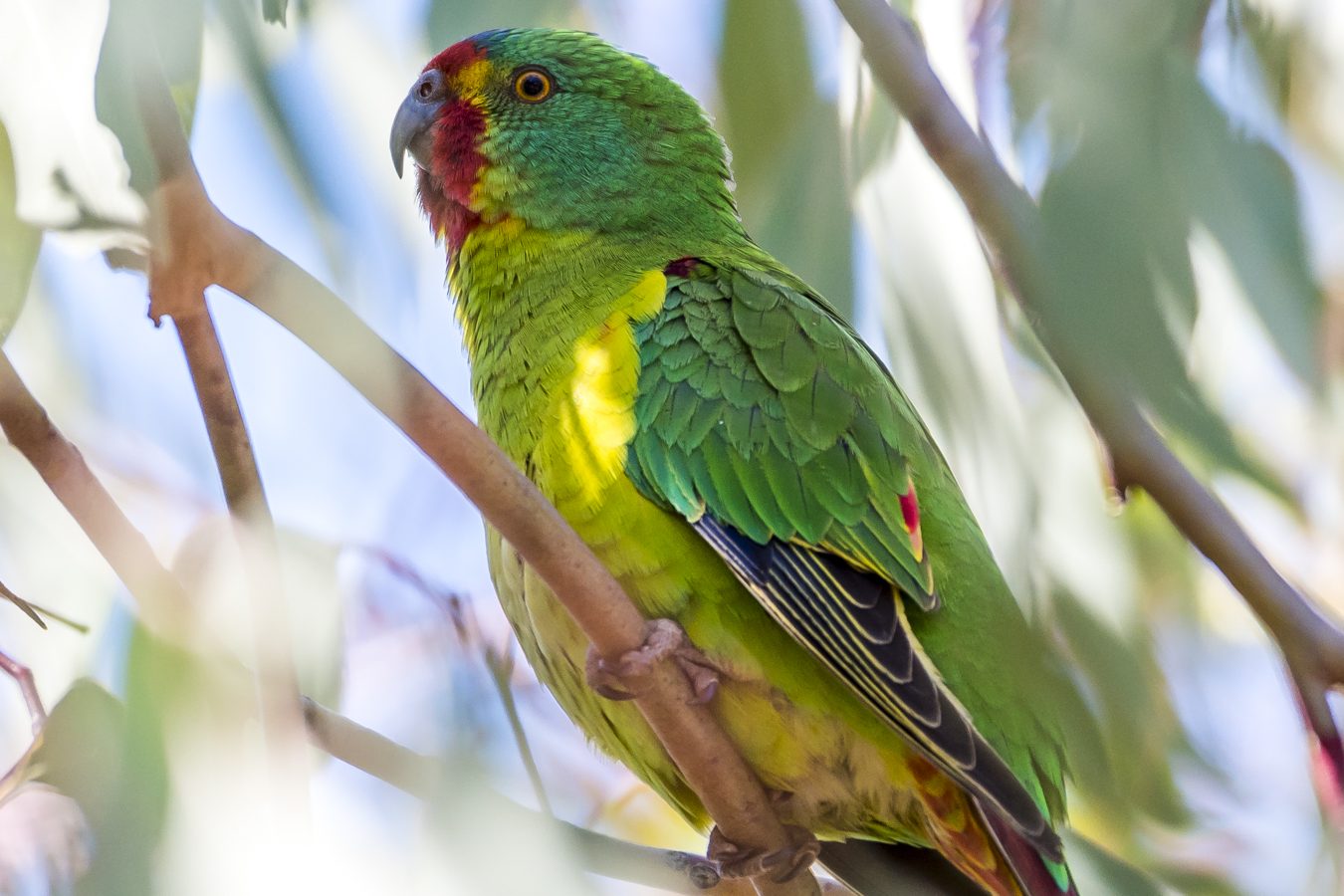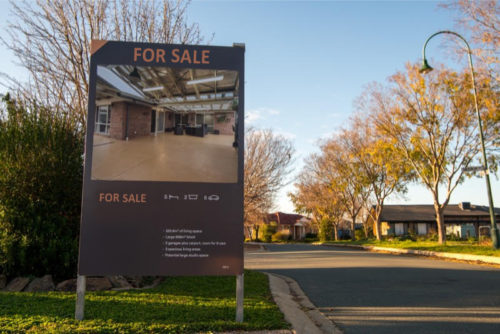
By Tracey Ferrier
Scientists who wrote a new plan to save the world’s fastest parrot say they’ve been blindsided by unauthorised changes that favour the logging industry.
The extraordinary swift parrot was once relatively common in Australia’s eucalyptus woodlands but it’s now on the verge of extinction.
No one really knows how many are left. The best estimate is 750 mature birds but it could be far less than that.
Veteran scientists on the Swift Parrot Recovery Team say the biggest threat to survival is the ongoing loss and degradation of its only breeding grounds in Tasmania, and critical foraging grounds along Australia’s east coast.
But the Tasmanian and NSW governments are continuing to log native forests that support the migratory parrot, which moves around a lot and does not use the same patches of habitat from year to year.
When scientists were called upon, years ago now, to draft a new national recovery plan for the species that said exactly that.
They were very clear that the primary threat to survival was habitat loss driven by logging and other human pressures, with predation by sugar gliders listed as a secondary threat.
But there’s simmering anger over what one team member called a “secret revision process” that flipped the carefully worded hierarchy of threats from habitat loss to the glider, which likes to eat swift parrots and their eggs.
Ornithologist Mark Holdsworth has served on the recovery team for 20 years and is deeply disturbed by changes that were made after the draft was handed to bureaucrats.
“The recovery team was blindsided by the process. Someone decided ‘let’s blame the sugar glider’ and distract everyone away from the real issue,” he says.
“Certainly we identified the sugar glider as one of the threats to the species in some areas.
“But the continued loss of native forests, in particular nesting habitat, is the primary cause of decline for this species. Until that stops, this species is going to become extinct.
“No species expert on the recovery team is against this view.”

Mr Holdsworth says team members would not have consented to the changes but were never given an opportunity to object.
And in his experience drafting recovery plans for other species, the lack of close, ongoing consultation with species experts is extraordinary.
In June 2023, after years of hold-ups, a federal government representative told the recovery team there’d be a “new opportunity” for relevant states to comment and seek changes to the draft before it was finalised.
It was made clear at that point the scientists who wrote the plan wouldn’t get another chance to review a document the recovery team last saw in September 2020.
“It is at the federal minister’s discretion whether to include these changes and/or to address comments and feedback received from the states,” minutes from that meeting note.
“There are no further opportunities for the Swift Parrot Recovery team to comment on the draft Swift Parrot Recovery Plan before it is finalised.”
A few months later in September, to mark National Threatened Species Day, federal Environment Minister Tanya Plibersek issued a press release announcing the plan had been released.
When recovery team scientists got hold of it, they choked.
Not only had the order of threats been reversed in key parts of the plan, but Mr Holdsworth and others say there was an obvious watering down, and softening to references about logging impacts.
Veteran recovery team member Dr Dejan Stojanovic from the Australian National University says the plan, as it stands, “absolutely will not save the swift parrot from extinction”.
“How is it a recovery plan? This plan scapegoats sugar gliders. It’s just a big misdirect away from the obvious damage native forest logging is doing to the habitat of the swift parrot.”
He says logging impacts are even more concerning given research has shown sugar gliders thrive in disturbed forests.
“We’ve shown a couple of times now that predation is worse in more disturbed forests and it’s less bad – even if gliders are there – in intact old growth native forests.”
Other recovery team specialists, who declined to be named, told AAP there’d clearly been concessions to get state governments that still log native forests to sign up to the plan.
“There’s policies that directly conflict with the plan, so it’s very difficult to get people to sign off and say yes we need to stop logging – which is a bloody obvious thing,” one said.
“Everybody knows. And yet nobody will politically take that stance.”
For now the plan remains in draft form, in the order of eight years after it was decided a new one was needed following the uplisting of the species to critically endangered.
A 2017 document from the federal environment department details why the fresh plan was commissioned.
It cites recent modelling suggesting parrot numbers were declining “due to the combined effects of nest predation by sugar gliders and the ongoing loss of old growth forest within their breeding habitat”.
It also lists the primary conservation actions needed to reverse the trajectory of decline.
The first is to prevent further habitat destruction from land clearance, grazing and forestry activities in high quality nesting and breeding habitat.
The second is to develop and implement strategies to reduce sugar glider predation, something the current plan from 2011 doesn’t cover.
Federal Greens Senator Janet Rice has long been asking questions about the new recovery plan and why it’s taken so long to complete.
She scoffs at suggestions by federal bureaucrats that changes to the draft since the recovery team last saw it don’t qualify as significant.
“They are very substantial, and they are very much downplaying the impact that native forest logging has.”
She says the minister cannot go ahead and jointly make the new plan with relevant states when “it’s very clear it is not going to make any difference”.
AAP asked if Ms Plibersek would consider sending the draft back to the recovery team for further review.
Her office did not respond and sent the request to her department.
It said that while recovery teams “may support” the drafting of recovery plans, the independent Threatened Species Scientific Committee was legally responsible for advising the minister on such matters.
Last year, the then chair of that committee, Professor Helene Marsh, said it signed off on the draft on November 11, 2020. After making “minor” modifications, it recommended to the minister that the plan be made.
“What has happened since then is a matter for the department,” Prof Marsh told a parliamentary hearing.
She said she would have expected any substantive changes to come back to her committee.
“I can say to you that it has not been referred back to the committee.”
Tasmania’s public forestry company, which trades as Sustainable Timber Tasmania, says it did not receive or review the final draft.
The NSW Forestry Corporation said it did not have any involvement in the plan.
Who can be trusted?
In a world of spin and confusion, there’s never been a more important time to support independent journalism in Canberra.
If you trust our work online and want to enforce the power of independent voices, I invite you to make a small contribution.
Every dollar of support is invested back into our journalism to help keep citynews.com.au strong and free.
Thank you,
Ian Meikle, editor





Leave a Reply